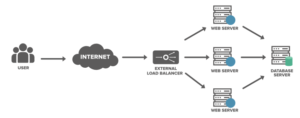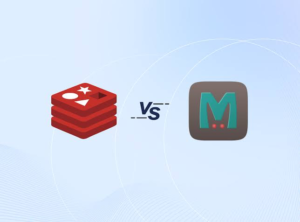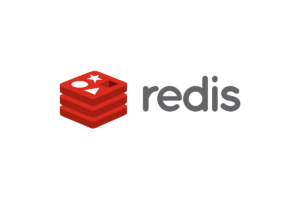
Introduction to NoSQL Databases
NoSQL (which stands for “not only SQL“) databases are a category of database systems that provide an alternative approach to data storage and management compared to traditional relational databases. Unlike rigid relational structures, NoSQL databases are designed to handle large data volumes, rapid ingestion, and adaptable models. NoSQL databases excel in applications demanding substantial scalability, high availability, and adeptness in managing a variety of data types.
NoSQL databases differ from relational ones by using a single structure, like JSON documents, rather than typical tabular formats. Lacking the need for a schema, this non-relational design facilitates swift scalability for handling extensive, often unstructured data collections.
Key Features and Concepts of NoSQL Databases
NoSQL Databases has many useful key features which makes it a great choice for some of the applications, these are:
- Flexible Schema: Unlike traditional relational databases, NoSQL databases do not enforce a fixed schema. This means you can store and manipulate data without needing to define a rigid structure in advance. This flexibility proves invaluable in applications where data undergoes frequent changes or lacks a well-defined structure.
- Scalability: It are designed for horizontal scaling, seamlessly accommodating more servers or nodes to manage growing data and traffic. This makes them suitable for applications with rapidly growing data requirements.
- Data Models: It support various data models, including key-value, document, column-family, and graph. Specific use cases optimize each model. For example:
- Key-Value Stores: The simplest approach involves storing data as key-value pairs. Examples include Redis and Amazon DynamoDB.
- Document Stores: Store data in flexible, semi-structured documents. MongoDB and Couchbase are popular examples.
- Column-Family Stores: Collections of grouped columns form the structure known as column families for organizing data. Apache Cassandra is a well-known example.
- Graph Databases: Designed to store and query relationships between data points. Neo4j and Amazon Neptune are examples.
- High Availability: It often offer mechanisms to ensure high availability and fault tolerance. To mitigate the potential for data loss stemming from hardware failures, data is routinely replicated across numerous nodes.
- CAP Theorem: It adhere to the CAP theorem, which asserts that in a distributed system, only two of Consistency, Availability, and Partition Tolerance can be guaranteed. Different NoSQL databases make different trade-offs based on this theorem.
- Use Cases: Real-time analytics, content management, e-commerce, social networks, and IoT applications are common domains where NoSQL databases find utility.
It’s important to note that while NoSQL databases offer many advantages, they are not a one-size-fits-all solution. Selecting between NoSQL and relational databases hinges on your application’s needs, such as data structure, scalability, and consistency demands.
Popular this includes MongoDB, Cassandra, Redis, Couchbase, Neo4j, and Amazon DynamoDB, among others. Thoroughly assessing your project’s requirements is essential, given that each database has strengths and limitations, guiding your NoSQL choice.
Use Cases
NoSQL databases exhibit versatility and find application across diverse use cases, addressing challenges that traditional relational databases may encounter. Here are some common use cases where NoSQL databases shine:
- Real-Time Analytics: Particularly, column-family stores such as Apache Cassandra excel in managing extensive time-series data volumes and facilitating real-time analytics. They allow you to store and analyze data from various sources quickly.
- Content Management Systems: For content management systems, particularly, document-based NoSQL databases like MongoDB are popular choices. They manage varied, unstructured content like articles, images, videos, offering effortless scalability and content retrieval capabilities.
- E-Commerce Platforms: It can efficiently manage product catalogs, customer data, and user-generated content for e-commerce websites. Their ability to handle fluctuating data volumes and quick queries is advantageous for handling online shopping experiences.
- Social Media and User Profiles: Graph databases like Neo4j excel at modeling and querying intricate relationships, suiting social networks, recommendations, and user profile management.
- Internet of Things (IoT) Data: Adeptly managing high-speed IoT data ingestion and storage, It analyze sensor data from diverse sources effectively.
- Log and Event Data: It are ideally suited for capturing, storing, and analyzing log and event data originating from applications, servers, and devices.
- Caching and Session Management: Key-value stores like Redis are commonly used for caching frequently accessed data, improving application performance and reducing the load on primary databases.
- Personalization and Recommendations: It can store and process large amounts of user data to provide personalized recommendations and experiences on websites and applications.
- Time-Series Data: It can handle time-stamped data, making them suitable for applications that require tracking and analysis of temporal data, such as financial data, IoT sensor readings, and monitoring systems.
- Location-Based Services: It can manage geospatial data efficiently, supporting location-based services like mapping, geofencing, and location tracking.
- Gaming Applications: It proficiently oversee user profiles, leaderboards, in-game events, and interactions within online and mobile gaming applications.
- Scientific and Research Data: It can handle complex scientific data, simulations, and experiments, providing efficient storage and retrieval for research purposes.
- Catalogs and Inventory Management: It can manage product catalogs, inventory, and supply chain data in industries such as retail and manufacturing.
- Multi-Model Databases: Some NoSQL databases offer support for multiple data models in a single system, allowing you to address a variety of use cases within the same database.
It’s important to note that while NoSQL databases excel in these use cases, the choice of database technology should align with your specific application requirements, scalability needs, and data modeling considerations. Careful evaluation and planning are essential to ensure that the chosen NoSQL database meets your project’s objectives effectively.
Conclusion
In conclusion, NoSQL databases offer a modern and flexible approach to data storage and management, providing numerous advantages for specific use cases and applications. NoSQL databases’ capacity for diverse and dynamic data, scalability, performance, and unique models render them invaluable in today’s data-driven landscape.
Granting developers the freedom to adapt to evolving data structures, NoSQL databases liberate them from the constraints of a rigid schema. Their horizontal scalability enables seamless growth to accommodate increasing data loads and user demands. Incorporating high availability, fault tolerance, and partition tolerance ensures data integrity and system reliability, even in challenging operational environments.
Different types of NoSQL databases, including key-value stores, document stores, column-family stores, and graph databases, cater to various application requirements. This versatility empowers organizations to choose the most suitable database technology for their specific needs, whether it’s real-time analytics, content management, social networking, IoT data processing, or any other use case.
However, it’s important to acknowledge that NoSQL databases are not a universal solution. While they excel in certain scenarios, traditional relational databases continue to serve well-established use cases that require complex transactions, strict data consistency, and structured data relationships.
Ultimately, adopting a NoSQL database hinges on understanding your application’s needs, data characteristics, and scalability requirements comprehensively. Effective utilization of NoSQL benefits requires meticulous planning, thoughtful trade-off considerations, and ongoing assessment, ensuring project success in dynamic data management. You can also check other types of Databases in our blog posts.




[…] is a popular open-source, NoSQL database that uses a document-oriented data model. It stores data in a flexible, JSON-like format called […]
[…] world of databases, two prominent paradigms emerge: SQL (Structured Query Language) databases and NoSQL (Not Only SQL) databases. Each paradigm addresses different data storage and retrieval needs, and understanding […]
[…] Databases: NoSQL (Not Only SQL) databases handle large volumes of unstructured or semi-structured data. They provide high […]
[…] databases, also known as NoSQL databases, provide a more flexible and scalable approach to data management. Unlike relational databases, […]